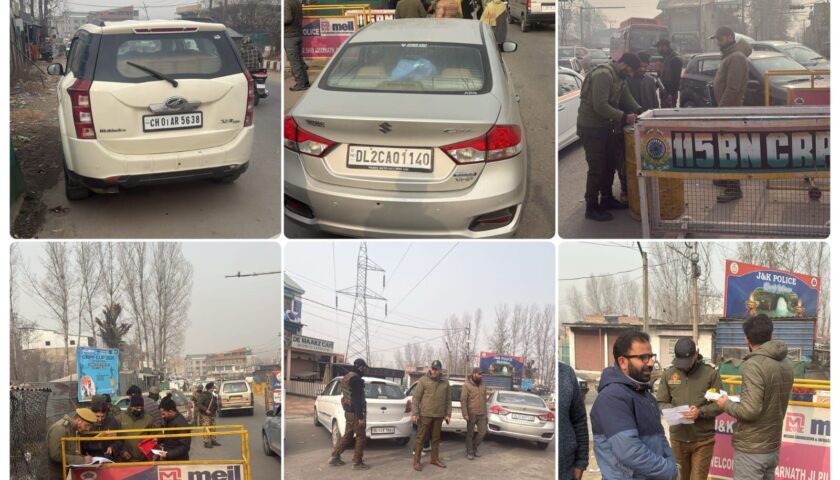 The water level in river Jhelum has risen following incessant rains but officials maintain that there is nothing to panic as the levels are still in normal range.
The water level in river Jhelum has risen following incessant rains but officials maintain that there is nothing to panic as the levels are still in normal range.
“Water level recorded at Ram Munshi Bagh and Sangam on Wednesday remained at 8 feet and 4.95 feet respectively. It is normal as per past records of February,” Chief Engineer, Irrigation and Flood Control Kashmir, Muhammad Hanief Lone told Kashmir Post.
“When water level touches 16 feet at Ram Munshi Bagh, it is alarm and if it reaches 18 feet, it means danger of floods,” he said.
He added that the water level at Asham (Sumbal) was 5.08 feet. “All the water levels at places I mentioned are normal. The water level rose due to rains on mountains and plains,” he said.
He added that in March, the water level may remain between 8 to 10 feet. “If it rains for a day, the water level rises. It then again goes down. In March, the chances of rains are frequent. According to our assessment, this March, the water level may remain from 8 to 10 feet on gauge which is normal average of water level in this month,” he said.
He added that special teams of officials have been set up to monitor water level round the clock. “The purpose of setting up these teams is only to keep a check on water level. At present, everything is normal and under control. In case of any unusual activity (of water level), we are prepared,” he said.
The snow which accumulates on mountains starts melting in March-April, depending on temperature rise. “This year, we had good amount of snowfall on mountains. We will have good water level in Jhelum this year, as it will increase once snow starts melting” said an official.
“The snowfall, coupled with thunders and lightening, was the fourth major spell of precipitation this winter. And it followed the January’s 132.8-mm snowfall in Srinagar—the highest since 1992,” he informed.
After 2014 deluge, the government ordered dredging the river bed to prevent a repeat of 2014 floods.
However, the process has faced several roadblocks right in its second phase, when it was handed over to a Kolkata-based dredging firm in February past year.
Chief Minister Mehbooba Mufti had recently expressed unhappiness over the slow process of dredging in Jhelum.
The contractor was supposed to remove seven lakh cubic metres of debris in 12 months from Srinagar and nine lakh cubic metres in 20 months from Baramulla and Sopore. But as of now, the “tentative” figures provided by officials reveal that the contractor has only completed around 1 lakh cubic metres in Srinagar and around 2.5 lakh in Baramulla and Sopore.
The slow pace has been attributed to the 2016 unrest.
However, Chief Engineer Lone said that “the contractors have been directed to meet the target. Dredging is going on. I assure that no further delay would be tolerated in this regard,” he added.
Water level still normal in river Jehlum : Officials




